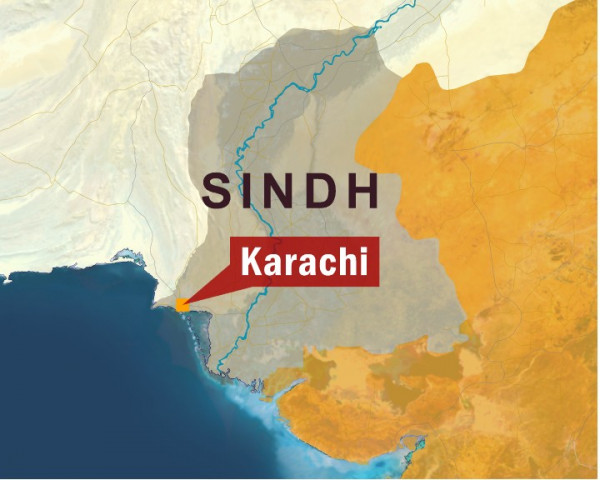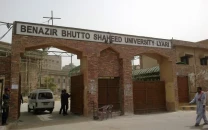Helping discover unchartered territories
Rubina Liaquat makes her villagers proud by being the first woman from Rehri Goth to work on a professional level.

She spends three hours in buses every day to reach her office at a bank in Korangi and return home.
The Rs10,000 that she earns every month is a big sum for her since it earns her a great deal of respect and admiration from her community, which was once against educating women.
“Most of the girls in my village are now studying and want to be like me,” she said proudly.
Rubina has finished her intermediate studies and is also supporting her community through a United Nations Development Programme project.
Before 1994, the remote and deprived fishing village hardly had two government schools, with no concept in the community to send girls to study. There was very low attendance of students, mainly boys, and her family had hired a private tutor for their 15 children.
“Sending girls to school was out of the question back then,” she said.
It was only when a private organisation, the Green Crescent Trust (GCT), opened up the Hilal Public School in 1996 that the mindset of the people in this village changed.
“It took constant motivation and relentless efforts of our teachers to earn the attention, respect and trust of parents and community elders and persuade them to enroll their children, especially girls,” said Azeem Siddiqui, the coordinator of the GCT.
And the same has been the case with all 50 GCT schools, which are now being run in the remote areas of Karachi and interior Sindh.
The GCT, which was established in 1995, has schools in 15 districts and towns of Sindh with an enrollment of 7,166 students and a staff of 400 teachers.
Mushtaquddin, a resident of Landhi, who has been working with the GCT for the last 14 years, says that in some villages of Karachi, people were not even aware about what exists beyond the Quaidabad area.
“When I started teaching my first class in a village, it took me a week just to make the students sit together as they were all divided into rival clans,” he said.
“Now with all the schools set up by the GCT, many parents say they don’t have to go to the village elder to have their letters and bills read, as their children can do that for them.”
Recollecting his experience of government schools, Siddiqui said that when he went to a school in New Karachi for BEd teacher training, he was astonished to find out that while a huge staff of 92 teachers was present and the 700 enrolled students also attended the school, no classes were being held.
“The principal told me that they (students) are taught only when they want to study.
That day I only had six students in my class. I tried to motivate them. The next day there were 60 students and 120 the day after. Four other teachers and I stayed there for 30 days and the students turned out to be brilliant and became serious about their studies,” he said. It’s not about resources, he believes, it’s about motivation.
Any place will do
GCT’s schools are running in government buildings, which have been provided to them by the local communities. While there are schools with better facilities, the one recently set up in Sohrab Khan Goth, a village near the Northern Bypass, has two classrooms built with straw and wood. It enrolled 70 students on its first day and now has 110 students.
The landlord of the goth donated his land for this school when he saw people of the nearby village benefitting from education. The residents of the goth were so enthusiastic about the school that the classes had to be started even before the infrastructure was planned.
Each GCT school charges a fee of Rs50 to Rs150 from those who can afford it and focuses on community and parental involvement as well as extracurricular activities such as competitions and exhibitions to develop awareness among students.
Many students have gone on to make the GCT proud by capitalising on the opportunity they were given. Some examples are Muhammad Alam and Mian Muhammad, two students of Hilal Public School Mithi, who conduct a live half-hour programme on Radio Pakistan Mithi; Rizwan Ali of Haji Khan Muhammad Goth in Sanghar, who is pursuing a career as a chartered accountant and his sister Nasreen, who has completed her BSc.
GCT faces several problems, including a shortage of human resource, distance, community interest, environment, child labour and tribal customs and values.
But even then, every day at 8 am, the children studying in these 50 schools stand shoulder to shoulder for their morning assembly with the hope of a better day.
Published in The Express Tribune, September 19th, 2010.



















COMMENTS
Comments are moderated and generally will be posted if they are on-topic and not abusive.
For more information, please see our Comments FAQ